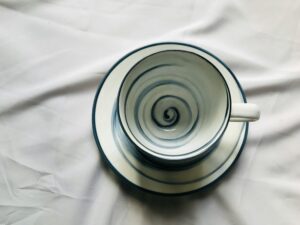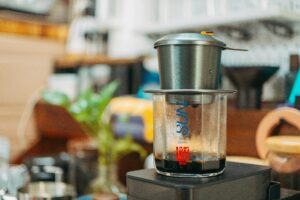The Secret Path Some Brands Take to Evade Tariffs and Boost Profits
Coffee is one of the most beloved beverages in the world, enjoyed by billions of people each day. It’s more than just a drink—it’s a culture, a lifestyle, and for many, a daily ritual. But behind the steaming cups and cozy cafés lies a complex global trade industry, with intricate policies, taxes, and international laws shaping how coffee is grown, processed, traded, and sold. Within this complex system exists a little-known strategy referred to as the “coffee loophole.”
Table of Contents
The coffee loophole is a clever tactic used by some coffee companies to avoid paying tariffs or duties when importing certain types of coffee products. While the term might sound like a marketing buzzword or internet myth, it is very real—and it has significant implications for the global coffee trade, economies of exporting nations, and even the quality of coffee you drink.
Understanding Coffee Tariffs and Trade Regulations
To fully grasp the concept of the coffee loophole, it’s important to understand how international coffee trade works. Countries often impose tariffs, which are taxes on imported goods, to protect their local industries, generate revenue, or regulate trade relationships. In the case of coffee, the United States and other nations typically impose higher tariffs on roasted coffee than they do on green (unroasted) coffee beans.
Why the difference? Green coffee is considered a raw agricultural product, and many developing nations rely on coffee exports as a major source of income. To support these economies, international trade rules—like those established by the World Trade Organization (WTO)—often keep tariffs on raw coffee low or even eliminate them entirely.
However, roasted coffee represents a processed, value-added product. When coffee is roasted, it becomes more shelf-stable, gains aroma and flavor, and is much closer to being sold to the end consumer. Many countries view this processing step as a way to add economic value, so they charge higher tariffs on roasted coffee imports to encourage local roasting and job creation within their borders.
This difference in tariff rates creates a financial incentive for coffee businesses to manipulate how they import their products—and that’s where the coffee loophole comes in.
VitaCup Slim Instant Coffee Packets
What Exactly is the Coffee Loophole?
The coffee loophole refers to a legal workaround that some companies use to avoid paying higher tariffs on roasted coffee by roasting the beans just before the import or reclassifying the product in a way that qualifies for lower duties.
There are a few strategies used within this loophole:
1. Roasting Coffee in Countries with Preferential Trade Agreements
Instead of roasting coffee in the country where it is grown (often a developing nation like Ethiopia or Colombia), companies may ship green beans to countries with free trade agreements or lower tariffs. These countries roast the coffee, package it, and then export it to high-demand markets like the U.S., Canada, or the EU.
For example, a company may ship green beans from Kenya to Germany, roast the coffee there, and then export it to the U.S. Because Germany has certain trade privileges with the U.S., the company avoids the higher tariff that would apply if the beans were roasted in Kenya and shipped directly.
This practice raises concerns because the country that originally grew the beans misses out on the opportunity to capture more value through processing jobs and export earnings.
2. Importing Coffee Extracts or Concentrates
Another form of the loophole involves reclassifying roasted coffee in the form of extracts, essences, or concentrates, which are sometimes subject to lower import duties than whole roasted coffee beans or ground coffee.
For example, a coffee concentrate used for cold brew or ready-to-drink beverages might be imported under a different tariff code that results in a lower duty rate, even though the product is essentially roasted coffee in a liquid form.
This classification trick allows companies to bring in coffee products that are ready for use while avoiding the higher taxes associated with traditional roasted coffee.
3. Roasting Just Before Import
Some brands import green coffee beans and roast them in bonded warehouses or free trade zones near ports of entry. These areas often offer tax incentives or exemptions for processing goods before they enter the local market.
By roasting the beans in these zones, the company can claim the product as locally processed, sidestepping the tariff that would apply to roasted imports. It also gives them a fresher product, which is a marketing advantage.
This practice is especially common in major coffee-consuming countries like the United States, where companies can maintain quality control, save on tariffs, and still label their coffee as freshly roasted.
Is the Coffee Loophole Legal?
Yes, the coffee loophole is legal—but it operates in a gray area of international trade laws and ethics. Companies that use these strategies are not breaking any laws, but they are taking advantage of inconsistencies and gaps in the tariff system.
Critics argue that the loophole undermines the economic development of coffee-producing countries, which often struggle to move up the value chain. While these countries grow the beans, they lose out on the opportunity to roast and package them locally, which would create jobs, increase export earnings, and improve local economies.
Supporters, on the other hand, argue that this is just smart business strategy. By minimizing costs through legal means, companies can offer lower prices to consumers, maintain profit margins, and reinvest in innovation.
Why Does the Coffee Loophole Matter?
The coffee loophole may seem like a niche issue, but it has far-reaching effects on multiple levels:
1. Economic Impact on Producing Nations
The most significant impact is on developing nations that grow coffee but lack the infrastructure to roast and export finished products. These countries are stuck in a cycle where they export raw materials and import finished goods—losing potential income and employment opportunities.
If more roasting and packaging were done locally, these nations could move up the global value chain and capture a larger share of the profits.
2. Influence on Coffee Quality
When coffee is roasted far from where it is grown, the final product may suffer in quality. Roasting closer to the source, using beans at peak freshness, often results in a better-tasting coffee. The coffee loophole may prioritize profit over quality, especially in mass-market products.
3. Consumer Awareness and Ethical Sourcing
In recent years, more consumers have begun to care about where their products come from and how they are made. Ethical sourcing, fair trade certifications, and sustainability practices are now part of the conversation.
If consumers knew that their favorite brand was using the coffee loophole to avoid tariffs—possibly at the expense of farmer incomes—they might reconsider their purchase decisions.
4. Policy and Trade Reform
The existence of the coffee loophole highlights the need for more balanced trade policies. Governments and international organizations may need to revisit how coffee is classified, how tariffs are applied, and how to better support producing countries in developing value-added industries.
FAQs About the Coffee Loophole
Q1: Is using the coffee loophole considered unethical?
It depends on perspective. While the practice is legal, many critics argue it is unethical because it shifts profits away from developing nations that grow the coffee. Others see it as a smart, cost-saving strategy within the boundaries of international trade rules.
Q2: Does the coffee loophole affect coffee quality?
Sometimes. Roasting coffee far from its origin can affect freshness and flavor. However, many companies have advanced roasting and packaging techniques that preserve quality, especially in specialty coffee.
Q3: How can consumers avoid supporting the coffee loophole?
Look for coffee that is roasted at origin or from brands that support direct trade and fair compensation for farmers. Certifications like Fair Trade, Rainforest Alliance, or Direct Trade partnerships often indicate ethical sourcing.
Q4: Are there any efforts to close the loophole?
Some governments and advocacy groups have proposed tariff reforms or investment in coffee-producing countries to encourage local roasting and value addition. However, global consensus on trade reform is complex and slow-moving.
Q5: Why don’t more producing countries roast their own coffee?
There are several challenges: lack of infrastructure, limited access to global markets, high transportation costs, and lack of brand recognition. It’s also easier to sell green beans in bulk than to compete in the competitive retail coffee market.
Q6: What can policy makers do?
Policymakers can offer incentives for roasting at origin, revise trade agreements to support developing economies, and invest in technology and training for coffee-producing countries to move up the value chain.
Final Thoughts
The coffee loophole is a fascinating example of how international trade rules can shape industries in unexpected ways. While it allows some companies to lower costs and streamline operations, it also raises questions about fairness, development, and sustainability.
As consumers, understanding the origin and journey of your coffee is the first step toward making more informed—and impactful—choices. Whether you’re a casual sipper or a coffee aficionado, knowing about the coffee loophole can help you appreciate just how much global strategy goes into every single cup.







